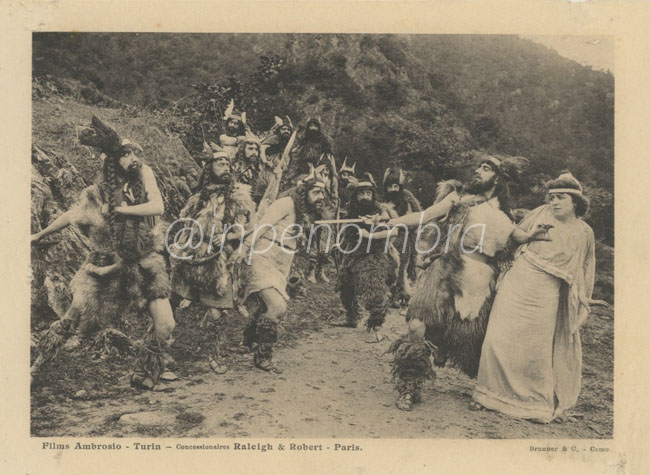
In quel tempo i Focesi, venuti dall’Asia Minore, fondarono Marsiglia, e le tribù del Celti, primi abitatori della Costa, dovettero ritirarsi a vivere di ruberie e di rapine nelle antichissime Selve dell’interno.
Ora avviene che un ricco negoziante d’armi, il quale per certi suoi affari si recava col suo somarello al villaggio vicino, fu fatto prigioniero e condotto nei boschi. I predatori, guidati da Vam-hir, giovane fortissimo capo di tribù, pretesero tale somma per riscatto del prigioniero, che né la moglie né la figlia dell’armaiolo mai avrebbero potuto pagare.
Glauca «la figlia» invano implorò l’aiuto dei concittadini, invano cercò col suo cervello un mezzo per venire in aiuto al padre. Questo solo le occorse: d’offrirsi lei stessa come ostaggio. Così fa. Corre al campo dei predoni e dice la sua proposta. I predoni accettano. L’armaiolo è posto in libertà e Glauca rimane schiava di quei selvaggi. Ma Glauca è tanto bella! In pochi giorni Vam-hir ne impazza. Il giovane ma feroce condottiero, astuto come una volpe e forte come un leone, ora sospira davanti le luci del tramonto e intreccia ghirlande di fiori: e la bella greca, che sa la forza della sua bellezza, ride trillando con le note più argentine della sua bella voce.
Vam-hir compirà il sacrificio: tradirà il suo popolo, la sua tribù, i suoi compagni e accompagnerà la bellissima fin sotto le mura di Marsiglia. Questo è l’ardente desiderio della divina Glauca e per Vam-hir i desideri della donna amata sono ordini. Che mai sarà di lui dopo, ora non pensa. E a che pensarci? La perdita di Glauca non è forse la fine della vita? Ma gli dei non vogliono il sacrificio dell’uomo prode. Vam-hir è sorpreso un giorno da un drappello di Greci ed è per soccombere quando sopravviene Glauca. La presenza della donna arresta i combattenti e le sue spiegazioni ammansano i Greci a favore dell’uomo delle Selve. Vam-hir potrà entrare in Marsiglia. E Glauca con uno dei suoi migliori sorrisi dice piano al selvaggio: «Ma non lo sai che anch’io ti voglio bene?».
(dalla brochure del film)
«A son of the Wilderness» Ambrosio. A story of Marseilles when the city was a Greek colony. It is a narrative of brigandage and has for its basis the capture of a village worker. His place is taken by his daughter, with whom the chief falls in love and frees her. Then comes a chase by villagers, with a capture and all the picturesque and thrilling features which go to make up a story of this sort. Photographically the film is an improvement over some previously released by this firm, and while the acting is largely of the swashbuckler type, it is alive and keeps the audience interested.
(Moving Picture World, January 29, 1910)

